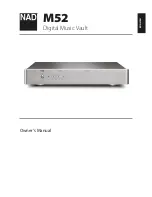
6. Then, turn the ring nut (Fig. 27 ref. 1) through the external levers
(Fig. 27 ref. 2) until the cone complete clamping (Fig. 27 ref. 3)
on the wheel (Fig. 27 ref. 4).
Fig. 27
1
3
4
2
7. For wheels with alloy rims, use the proper plastic guard (Fig. 28
ref. 1).
Fig. 28
1
8. At the end of the operations, loosen the device releasing first
the cone with the external levers and then moving the ring nut
and the cone away from the rim with the small levers.
9. Lower the shaft to release it from its seat, turn it of 90° on counter-
clockwise and extract it from the hole through the proper handle.
NEVER LEAVE THE WHEEL FITTED ON THE
MACHINE FOR A PERIOD LONGER THAN NEC-
ESSARY FOR CARRYING WORK AND IN ANY
CASE NEVER LEAVE IT UNATTENDED.
12.4.1 Rim blocking with tire down
The chuck with central locking has 3 different height mode. A “quick
release” system allows to remove the chuck mobile part and to
dowel the support plate at the required height.
The adjustment through the sliding shaft is possible following three
phases as indicated on the enclosed photo:
1. Lift the flange as the arrows indicated (Fig. 29 ref. 1).
2. At the same time release and lift the wheel support as the arrows
indicated (Fig. 29 ref. 2).
3. Check that the flange returns to coupler position.
Now it’s possible to place the tire in the right way with the working
tools.
Fig. 29
1
1
2
2
12.4.2 Reverse wheel pan protection
In case reversed wheels are used, in order to protect the rim, ap-
ply on the rubber platform a protection (Fig.
_
30 ref.
_
1), made of a
transparent plastic material. We suggest a constant replacement of
it and in any case if there are visible damages (see Fig.
_
30).
1
Fig. 30
23
















































